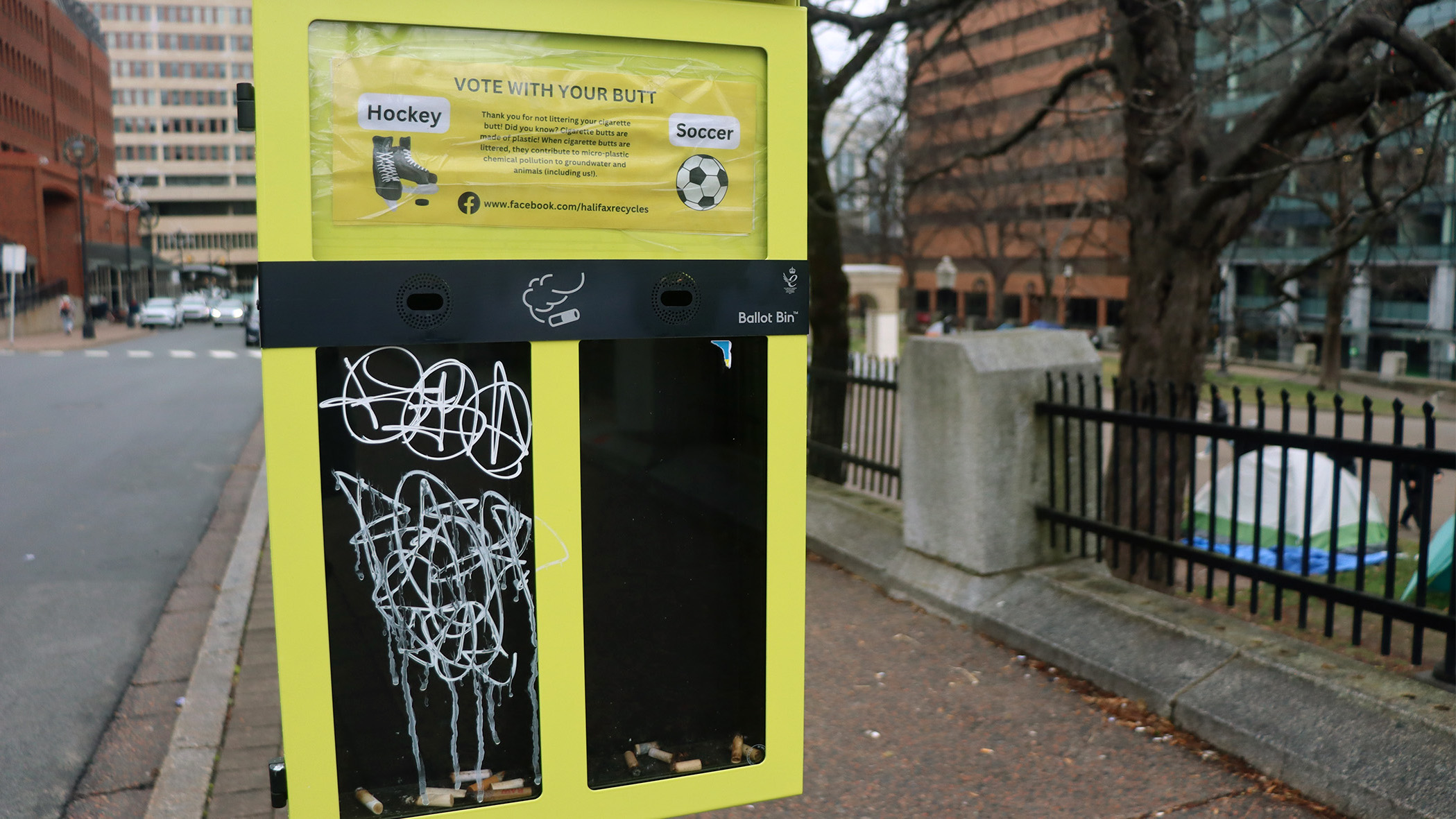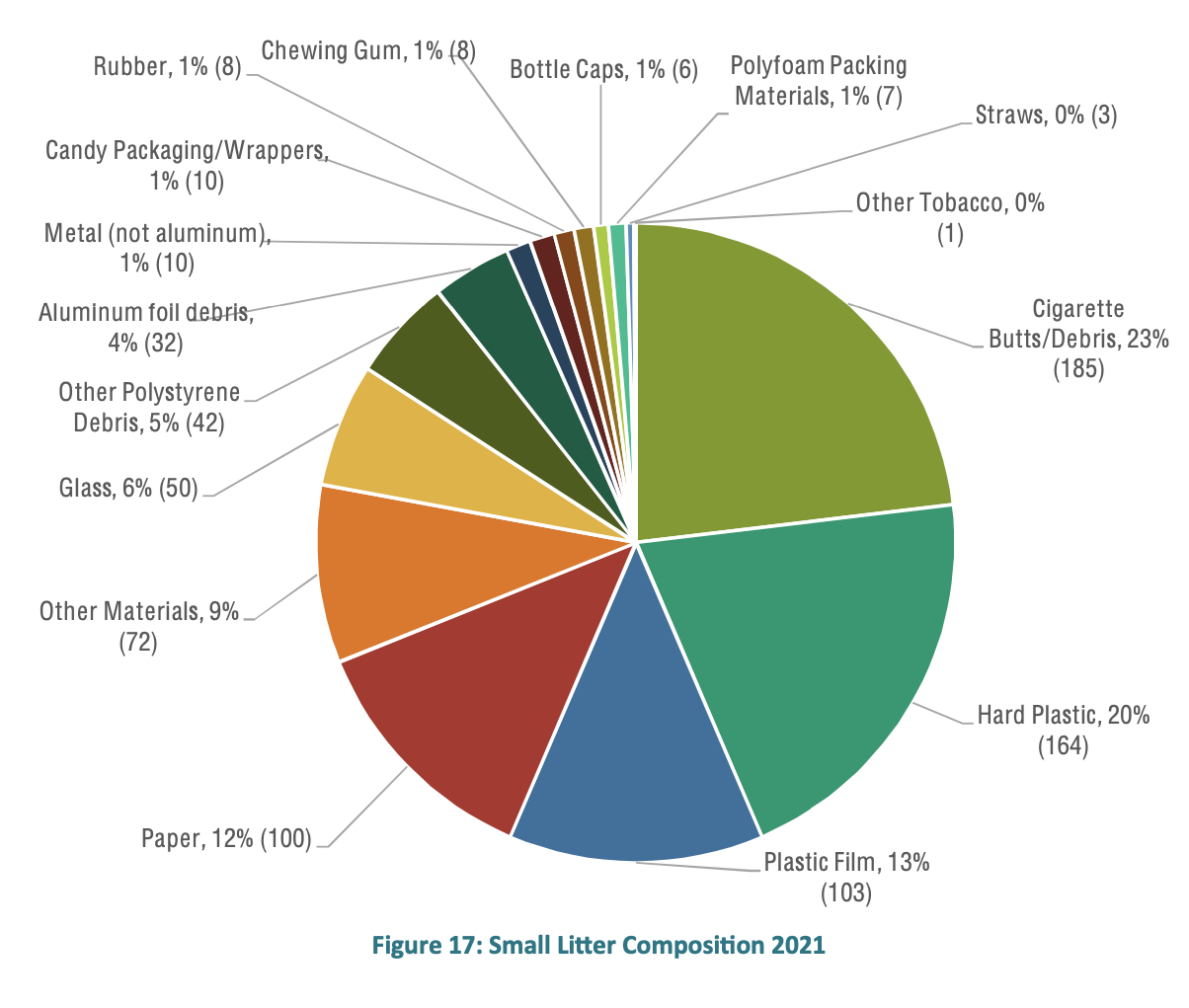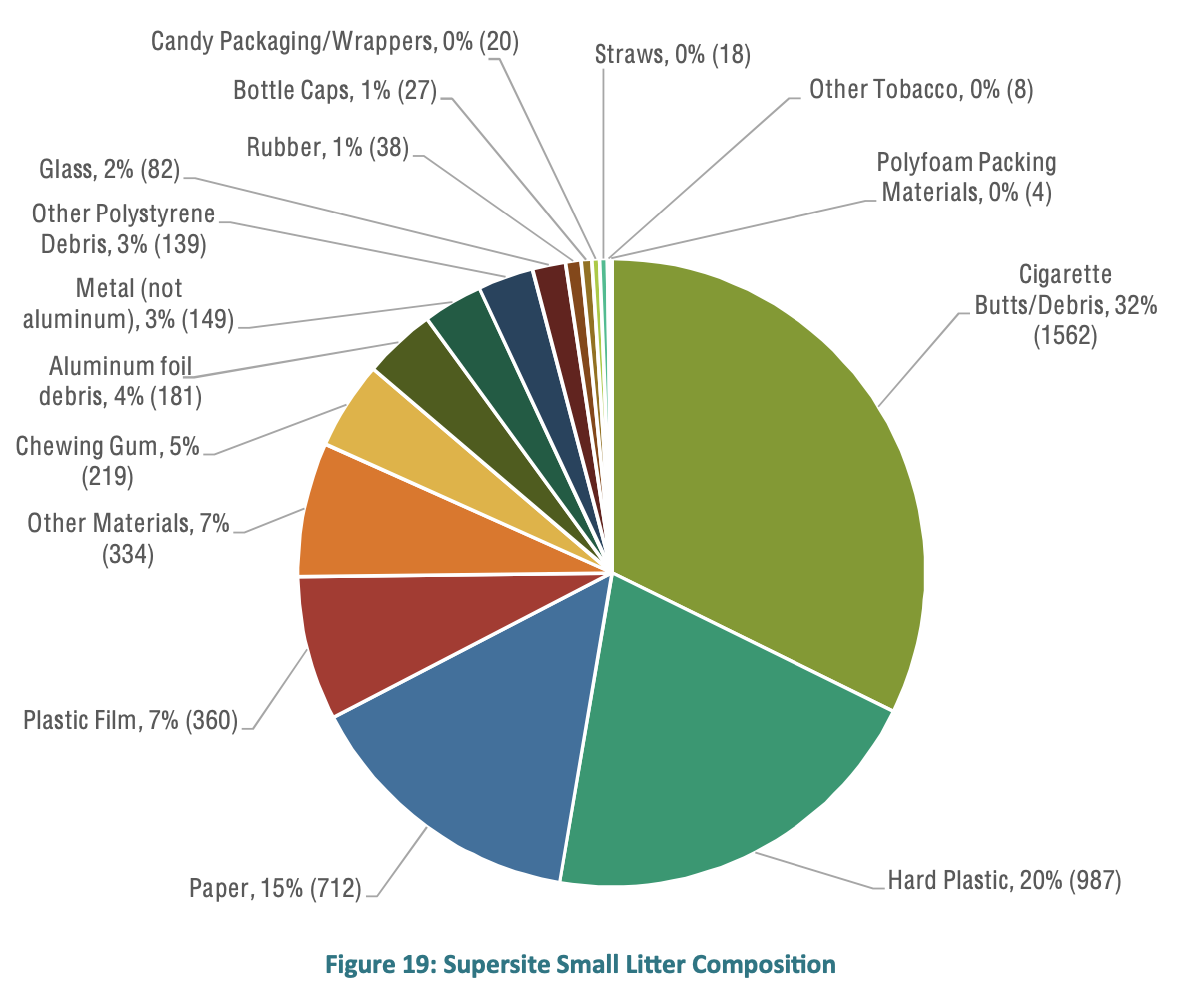Vote with your butt: Halifax’s new cigarette bins
HRM aims to reduce waste with new cigarette receptacles designed as voting systems

caption
This new cigarette butt bin is located on Argyle Street next to Grand Parade in Halifax.HRM smokers now have a new way to have their say.
Halifax Regional Municipality mounted four new cigarette butt bins in August as part of a pilot project.
The new cigarette receptacles are called Ballot Bins: bright yellow rectangular boxes mounted on a pole.
The bins act as a voting system. The front poses a fun question with two answers. Cigarette users vote by placing their cigarette butt in one of the holes under an answer.
The questions are updated every couple of weeks and can range from “hockey or soccer?” “pumpkin spice or no pumpkin spice?”
“I can say confidently that the smokers of Halifax do not like pineapple on pizza,” says solid waste educator for HRM, Ally Chant. “They do like pumpkin spice.”
The idea is to encourage proper cigarette butt disposal.
How it all started
In 2022, Divert Nova Scotia, a recycling conservation not-for-profit, published a report, conducted by Davis Pier Consulting, on Litter Behaviour Research Findings. The report measured the behaviour of litterers and examined possible ways to reduce littering in Nova Scotia.
“One of the things that they found to be effective in other jurisdictions and different research was that if the waste bins are more interactive or noticeable or fun, people are more likely to use it,” says Divert’s acting director of programs and development, Kathryn Bremner.
Divert NS decided to test this by funding HRM’s Ballot Bins.
“I would say that if there were more bins around, I would use them more. I think the ballots would definitely be an incentive and a more fun way to dispose of [cigarette butts],” says Anika Panet-Carino, a student at the University of King’s College in Halifax. She’s been smoking for around three years.
Ballot Bins are made by a U.K. company called Hubbub, a London-based award-winning environmental charity.
Divert NS bought the bins about two years ago. The cost was around $3,000 for six bins, says Bremner. Two of those bins are located at Divert’s Truro office: one for display and the other for spare parts. As of now, these, along with the new ones in HRM, are the only bins in Nova Scotia.
Chant is closely monitoring the bins and collecting data. HRM’s solid waste team records how many cigarettes are placed in the bins every week. They also measure a one-metre square around the bins to see how many cigarette butts end up on the ground.
“That’s really just a snapshot of that morning, because, you know, the wind, there’s like a lot of different factors that go into cigarettes being on the ground,” says Chant.
The team also monitors two comparable control areas to see how the regular cigarette butt bins are being used and how many cigarettes end up on the ground, says Chant.
“We’re getting [the data] analyzed professionally, outside of our departments, there’s no bias,” she says. “It’s going to be based on that data I think, if we go forward with installing them in other locations.”
Originally four Ballot Bins were installed in HRM. Two were taken down before Halifax’s first snowfall so they wouldn’t interfere with snow plows. The two that are currently up are found on Argyle Street and Alderney Landing. All bins are located in pre-designated smoking areas.
“The hope is that people will also maybe want to vote and will pick butts up off the street and maybe vote just to get their opinion known,” says Chant. “I don’t know if that’s actually happening, but that was one of the things that we’ve kind of talked about. It’s like a litter intervention potential,” says Chant.
Cigarette butts are the most common piece of litter

caption
Cigarettes line the pavement next to “Plato’s Cave,” an undesignated smoking area for students and faculty at the University of King’s College.Two years ago, Divert NS published its 2021 Nova Scotia Roadside Litter Audit conducted by Dillon Consulting Limited (Dillon), a Canadian-owned consulting firm. The type of litter was classified in two categories: large litter, equal to or larger than 25 square centimetres and small litter, smaller than 25 square centimetres.
The audit took place from June 14 to July 15, 2021 throughout the province in 75 locations.
During the small litter audit, Dillon observed three sections within each location and found 801 pieces of small litter; 12.3 pieces per site. The most common category of small litter were cigarette butts/debris at 23 per cent in each location across N.S.

caption
This pie chart highlights the categories of small litter collected in the small litter audits from Divert NS’s 2021 Roadside Litter Audit Report.“Cigarettes are made out of like a filter, a wrapper and then the tobacco,” says Chant. The filter is made out of plastic. “It’s called cellulose acetate, which looks like cotton, but it’s actually plastic fibres and they take 10 years to decompose naturally, and it will still just shed into micro plastics.”
Dillon also performed a “supersite” evaluation, which was completed at 10 of the locations and covered the whole area. The total of small litter was 4,840, or an average of 484 pieces per site. Again, the most common garbage were cigarette butts/debris at 32 per cent — an average of 156.2 cigarette butts/debris per site.

caption
This pie chart illustrates the categories of small litter collected in the supersite audits from Divert NS’s 2021 Roadside Litter Audit Report.About the author
Molly MacNaughton
Molly is originally from Digby, N.S. She's in her fourth year of the BJH program. She once covered a story about a murder; a murder of crows...
